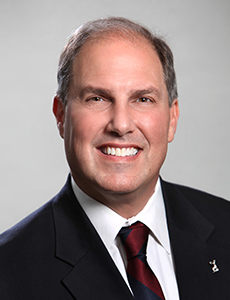What on Earth Is Pharmacovigilance and How Can It Foster Healthy Pain Management?

This year’s National Workers’ Compensation and Disability Conference digital sessions continue on January 27, with a presentation from Phil Walls, chief clinical officer for myMatrixx, and Adam L. Seidner, chief medical officer at The Hartford.
Their session, “What’s a Doctor to Do: Alternatives to Opioids in the Management of Pain,” will explore both pharmacologic and nonpharmacologic methods to wean patients off of existing opioid prescriptions while still effectively treating pain.
How We Got to Where We Are Today
While the opioid epidemic has been a nationwide crisis for a decade, CDC data indicates that opioid dispensing has declined to its lowest rate since 2006 in 2019, coming in at 46.7 prescriptions per 100 people. However, the pain those opioids were meant to treat hasn’t just disappeared and still requires attention from the treating physician.
For Seidner, who has decades of experience as an MD, that means a call to action for clinicians, which he’ll address in his portion of the session.
“First, we’ll look at how we got here in the opioid crisis and then how the opioid crisis from prescription medications has integrated with the heroin use we’re seeing and the overdoses,” Seidner explained. “And then, looking at what is driving the rise of overdose deaths. And then there’s a whole area we’ll be discussing around the pharmacologic alternatives — what other medications can be used other than opioids to help manage pain? And finally, I’ll be focused mostly on the non-pharmacologic alternatives.”
Non-pharmacologic alternatives include methods like cognitive behavioral therapy, massage, acupuncture and physical therapy.
The Lens of Pharmacovigilance
For his part, Walls will also bring a wealth of experience.

Phil Walls, chief clinical officer, myMatrixx
“I’ve been a pharmacist for decades now, and 25 years of that has been in the pharmacy benefits management space in workers’ compensation,” he said.
“I’ve seen a lot of changes during that time. One thing that was not good to see was the opioid epidemic, which was a national crisis. Working with my team of pharmacists, we frequently do interventions with doctors and help them to wean a patient off opioids, understanding that they’re still in pain so they need alternatives.”
In order to find those alternatives in the pharmacologic sphere, Walls and Seidner will focus the presentation through the lens of pharmacovigilance.
“Pharmacovigilance is a term that is most widely used by the FDA when a drug is presented to the FDA, and it goes through clinical trials to determine safety and efficacy and can be marketed to the public,” Walls said.
“People think, ‘Okay, it’s safe, I don’t have to worry about this drug.’ The truth of the matter is a limited number of individuals have been exposed to a drug during clinical trials, so once it hits the market it enters a phase of post-marketing surveillance, or pharmacovigilance.”
According to the WHO, pharmacovigilance also “aims to enhance patient care and patient safety and to support public health programmes by providing reliable, balanced information for the effective assessment of the benefit-risk profile of medicines and vaccines.”
An issue that, as COVID-19 vaccines roll out around the world, is top of mind for many.
As a “discipline in its own right,” according to the British Journal of Clinical Pharmacology (BJCP), pharmacovigilance is relevant to many aspects of patient care.
BJCP explains that, “After introduction of a new medicine into general use, the main safety methodology is observational, i.e. uses data from observation of patients treated in clinical practice rather than from experimental situations. In general, the experimental data are of much higher quality than the observational, with better control of confounding factors.”
“The challenge in pharmacovigilance, therefore, is to analyze and draw well-founded conclusions from observational data collected after marketing. In addition, data from observational epidemiological studies are playing an increasingly important role,” BJCP concluded.
Data and Analytics, Coupled with Pharmacovigilance
In the presentation, Walls and Seidner plan to explore the data analytics side of pharmacovigilance as the recognition of opioid alternatives grows.
“We took it a step further and said pharmacovigilance is exactly what we do with our data,” Walls said. “We’re constantly mining our data not only for unexpected results, but also looking at whether doctors prescribing a drug in an unexpected or possibly inappropriate way. That could mean doses that are too high, durations that are too long. It’s primarily a clinical component, but there are also financial components to pharmacovigilance, so looking for egregiously priced drugs as well.”
Walls noted that it’s important to distinguish pharmacovigilance from off-label use, which is an often misconstrued part of clinician prescribing for conditions like neuropathic pain.
“Off-label should not ever be considered synonymous with negative use,” Walls said. “It’s not good or bad, it just means the drug company didn’t submit the data to the FDA for a particular use. A great example of this is gabapentin. Gabapentin was never proven to the FDA to be effective for neuropathic pain, and yet it’s a first line treatment according to all of the guidelines, ACOEM, ODG, etc.”
For Walls, the key takeaways from the session are threefold:
“Number one, there are alternatives to opioids. Those alternatives include medications that have been proven effective in the management of pain. Number two, this doesn’t pain leaving opioids and going to something like medical marijuana. Because medical marijuana, although there may be promise, the studies are not conclusive and there’s also the element of addiction to marijuana as well. Number three, a term I hope more and more people start recognizing called, ‘deprescribing,’ meaning that prescribers need to know when to discontinue drugs.”
From the nonpharmacologic side, Seidner believes it all comes down to a concept now familiar to workers’ compensation professionals.
“The main thing is the importance of a holistic approach, looking at the whole person,” he said. “It comes out of the biopsychosocial approach, and bringing in the concept of an integrative approach. Try to tailor the therapy for that individual, not everybody is the same, it’s not a cookie cutter approach.”
Register for the event here. &











